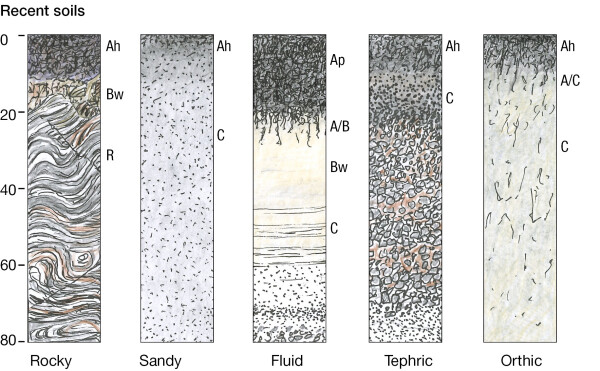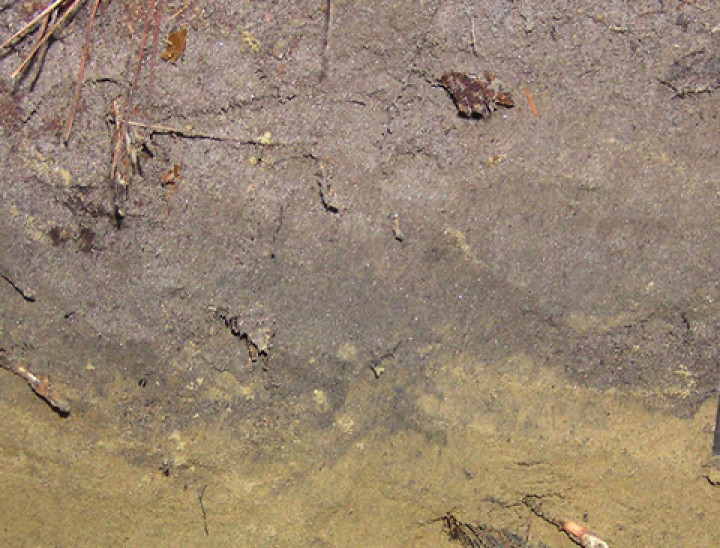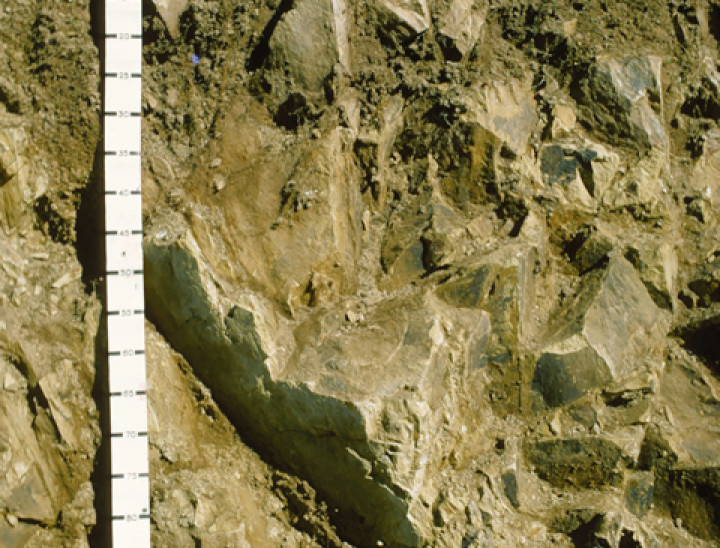Recent Soils [R]
- Home
- » Topics
- » Soil classification
- » NZSC
- » Soil orders
- » Recent Soils [R]
The highest recorded carrot production in the world was from a Recent Soil on the Taieri Plain
Recent Soils are weakly developed, showing limited signs of soil-forming processes. A distinct topsoil is present but a B horizon is either absent or only weakly expressed.
Occurrence
Recent soils occur throughout New Zealand on young land surfaces, including alluvial floodplains, unstable steep slopes, and slopes mantled by young volcanic ash. Their age varies depending on the environment and soil materials, but most are less than 1000 to 2000 years old. They cover 6% of New Zealand.
Physical properties
The soils have variable soil texture, with common stratification of contrasting materials, and spatial variability is high. They are generally deep rooting and have high plant-available water capacity.
Chemical properties
Natural fertility is usually high with high base saturation. The clay mineralogy is usually dominated by illite.
Biological properties
A continuous cover of vascular plants is normally well established.
Soil groups
Soil orders are divided into soil groups based on variation in factors such as drainage status, parent material, chemical and physical properties:
- [RH] Hydrothermal Recent Soils — soils naturally warmed by geothermal activity
- [RX] Rocky Recent Soils — rock at shallow depths
- [RS] Sandy Recent Soils — dominated by sand or loamy sand to depth
- [RF] Fluvial Recent Soils — in sediments deposited by flowing water
- [RT] Tephric Recent Soils — in sediments originating as volcanic ejecta
- [RO] Orthic Recent Soils — other Recent Soils, most commonly on slopes


